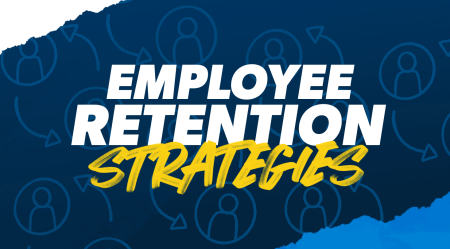It’s back-to-school time again! . . . Wait. Or is it? Right now, most of us know very little about what the 2020-21 school year holds. But one thing we do know is it’s going to look a lot different than it did in the pre-COVID-19 days.
And even though the American Academy of Pediatrics has encouraged schools to let students come back to the classroom, parents are still torn on the issue.1 This year, 56% of parents want a traditional, full-time, in-person school setting for their kids, and 37% want a hybrid of part-time school mixed with some online learning.2 But no matter what happens, it’s true that things will be different.
What Back to School Could Look Like
There’s no one-size-fits-all as we navigate this return back to the classroom—whether that’s in the school building physically or around an iPad screen at home. The CDC came up with guidelines for schools to follow as they start to reopen again, but depending on your region, state and even county, each school’s plan is going to look different.3
Here are a few of the most popular options being tossed around right now:
Revised In-Class Learning
Don’t forget to add a face mask to your back-to-school supply list this year. If your school opts to keep students in class, they’re most likely going to require students to wear a mask, sit in desks at least 6 feet apart (or more), and wash their hands a lot—like they’re preparing to go into surgery. By this point in the game, that doesn’t sound all that different from how we’ve all been living these past few months. But it’s going to be an entirely new way of interacting in a classroom for students.
And the differences don’t stop there. Students might even be grouped together in “bubbles,” where they only interact with the same, few students (and teachers) for things like recess, lunch and teaching sessions. The idea here is that you keep a small number of people interacting together and if one of them comes down with the virus, you could quarantine the “bubble” and not the entire classroom (or school!).
Hybrid In-Class/Online Learning
Another option is a best-of-both-worlds kind of deal. Some schools are planning to allow only a few students in on certain days of the week and then learn online during their “off days.” This way they can keep the school below capacity, give plenty of space for students and teachers to social distance, and allow plenty of time to wipe down the place before the next batch of kids arrives.
So, what does this tweaked schedule look like when it’s actually played out? It’s pretty simple really. Your student might be in-class Tuesday and Thursday and then continue school online from home on Monday, Wednesday and Friday. With this option, you get a little bit of normalcy back while also giving the school (and kids!) some breathing room to keep things safe.
All Online Learning
Then there’s this option, the one we’re all oh-too-familiar with. When the world shut down back in March, most schools went into 100% online mode all of a sudden. And while it was a klutzy process for some schools, there’s hope that (with a little more notice and planning) a fully online learning experience would be way better this second time around.
Use the best tools to teach your kids about money.
If you do end up having the kids at home this fall, be prepared for that to really impact your budget (kind of like it did this last spring). Sure, you might not be spending money on gas to cart them around from soccer games to dance recitals, but you’ll have a different set of things to pay for. If your kids usually eat breakfast and lunch at school five days a week, you’ll need to buy (and budget for) food that they’ll be eating at home. Do you usually give the thermostat a break when no one’s at the house? With the kids at home, you’ll have to cool or heat the house throughout the day too.
How to Budget for Childcare
If the office is calling you and your spouse back to work and you’re worried about childcare expenses you didn’t have before COVID-19 came along, here’s what you do:
Rework the budget.
First up, you’re going to have to tweak your budget, add in this new expense, and find any extra cash you can to cover it. So make a list of everything you need to pay for and put it all in order of what matters most. Remember that your Four Walls (food, utilities, shelter and transportation) always come first.
After those are covered, look at your budget and try to find things you can cut out for right now, like cable and other subscriptions (looking at you Netflix!), so you can make room in your budget for these new childcare expenses.You can probably free up a good chunk of cash by completely nixing your entertainment and eating out budget. Let’s be honest—these days, you won’t really feeling like you’re missing out on too much anyway.
Get creative.
Last year, you sent your first grader and third grader off to school while you and your spouse headed to work. And one of you was there to greet them when they hopped off the bus at the end of the day.
But this year doesn’t look like that . . .
If your kids are doing school remotely, then you’ve got to get creative when it comes to childcare. Can either you or your spouse work from home full time? If you can’t swing that, maybe one of you could work from home two days a week and the other works from home three days a week. Or maybe one of you can change your shift to work nights. There’s no time like now to embrace being a team!
If you have extended family around, now’s the time to use them! Find out if Grandma wouldn’t mind watching the kids while they tackle remote school. Or maybe your sister’s company is still letting her work from home and she’d be happy to have your kids at her house a few days a week. Think outside the box when it comes to family childcare here. It doesn’t have to be all or nothing. You can definitely work with your options and make a schedule that’s doable for your family.
But if you don’t have immediate family in the area, then consider teaming up with other parents in the same boat as you. Is there a stay-at-home parent in the neighborhood whose kids go to school with yours? Ask them if they’d be open to having your kids join them. Of course, you should pay them for their time. And don’t forget to ask around your neighborhood, your church, and your community to see if they know of any kind of schooling pods or groups in the area. Some might be offered at a fraction of the cost of fancy afterschool care prices.
Increase your income.
If your only option at this point is that pricey care being offered by the school and recreational centers in your area, then you’re going to need some extra cash to make ends meet. Start thinking about ways you can bring in some extra money right now.
Places like Uber Eats and DoorDash are hiring like crazy these days (people love their grocery delivery, you know). Maybe you or your spouse can pick up a couple of shifts to come up with the extra $250 a week you might need. Are you handy with sewing and fabric? A lot of people are opening up Etsy shops to sell the hottest item of 2020: face masks. They’re simple to put together and in high demand right now, so you could make a pretty penny.
Don’t forget to be open and honest with your full-time employer too. Maybe they have some extra work you can do to bring in more cash or would consider giving you your annual increase now. You never know if you don’t reach out and ask.
If you’ve tried everything, it might come down to dipping into your emergency fund to help you cover a few weeks of childcare while you come up with a long-term plan for your life and budget. But don’t rely on this—this isn’t what your emergency fund is for. You need to give everything else a shot first before you get to this point. Now that you know about this new expense in your life, you need to plan for it.
Again, let’s be super clear here: Using your emergency fund for childcare is not a good long-term plan. It can get you by in a pinch, but you need to come up with a better solution like nanny shares with your neighbors, getting help from family, and even upping your income (hello, side hustle!).
How to Prepare for the 2020-21 School Year
1. Stay up to date with your school.
This should go without saying, but be sure to stay in the loop this summer as things unfold and decisions are made in your school district. That way you’re not surprised when August 17 rolls around and you get a call from the school saying your kids didn’t show up for the first day of class. Whoops!
2. Make a budget.
That’s not surprising, right? You knew we were going to mention your budget. Yep—even in a blog about going back to school during COVID-19.
Here’s the thing: It doesn’t matter if your kids are going back to school in the classroom or around your kitchen table—you need a back-to-school budget. The things you need to buy might be new sneakers and glue sticks or extra snacks and peanut butter and jelly sandwich fixings (depending on what route your school takes with class—online or in-person). But either way, your budget will be ready to go.
3. Be sure that your electronic devices are ready.
If your school decides to take the hybrid route or go completely online, then you’re going to need to be ready. Make sure you have your family computer or your kid’s iPad ready to go. Some schools are even providing laptops and e-readers to students so that no one has a barrier in between them and learning. If you need a device for distance learning, reach out to your school and see if they can help.
4. Try to keep some sort of normalcy.
No matter what the school year is going to look like, try to make an effort to keep some kind of “normal” in place. We know you’re thinking, What the heck does normal mean anymore? Good question. Maybe that’s keeping your usual school routine in place each morning (eat breakfast, get dressed, start school) or it’s just sticking with the norm of taking the kids back-to-school shopping. You know your kids and your lifestyle best—the important thing is to do something that feels like it used to feel back before all this COVID craziness started.
5. Lead by example.
Look, we get it—life has been completely turned upside down these last few months. There’s no denying things have been weird. But remember that your kids hear what you say and notice what you do. If you’re constantly complaining that the kids have been at home too long or that your school isn’t acting the way you want them to, maybe it’s time to step back, take that deep breath in, and get a good look at your attitude.
The easiest way to give your attitude a kick in the pants? Cultivating a heart of gratitude. Start by making a list of all the things you’re thankful for—right here, right now, in this really messy season of life. Once you start listing things, you’ll be surprised by how quickly your whole outlook can change.
Should You Homeschool This Year?
This is such a personal decision—COVID-19 or not. But after homeschooling the kids for a few months already this year, you might be more open to it now more than ever. The good news is there are a ton of resources out there for you! Check the homeschool laws in your state and connect with local support groups in your community as you make your decision.
One of the biggest advantages to homeschooling is getting to select the curriculum and subjects that your student is interested in. Break up the usual flow of math, science and history with learning money principals that will impact your student’s life forever. Our Foundations in Personal Finance curriculum will empower your student to make solid money choices when it comes to things like earning money, making budgets, and going to college debt-free!
Read the full article here












